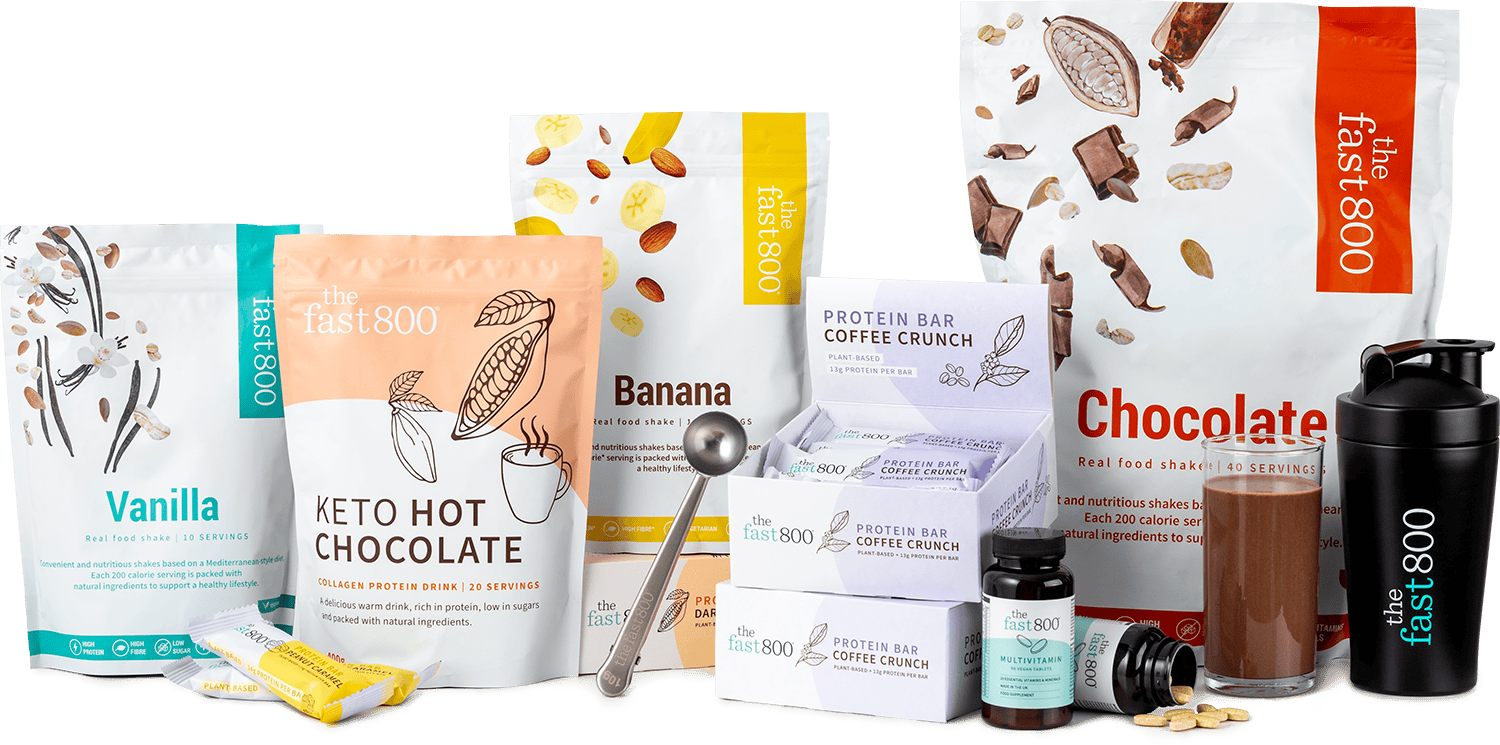Why is fibre good for you?
We get asked the question ‘Why is fibre good for you?’ time and time again, and with such extensive benefits, we felt it was about time to dedicate a full article to this FAQ!
Fibre is a form of indigestible carbohydrate found in foods. It is present in the cell walls of vegetables, fruits and whole grains, and as we lack the digestive enzymes needed to break them down, fibre passes through most of the digestive system relatively unchanged.
This, however, does not mean fibre serves no purpose. In fact, fibre is essential for maintaining a healthy digestive system, as well as reducing the risk of various chronic illnesses such as type 2 diabetes, cardiovascular disease and colon cancer.[1]
But there’s more.
So, just why is fibre good for you? Keep reading to find out its many benefits, and how to make sure you’re consuming enough of it.
What are the different types of fibre?
Fibre can be split into two main categories: soluble fibre (this is fibre that dissolves in water and can be metabolised by ‘good’ gut bacteria), and insoluble fibre (this fibre cannot dissolve in water). Both forms have their own health benefits.
Soluble fibre aids digestion, helps to reduce blood sugar levels, and keeps you fuller for longer. This in turn can assist in reducing the risk of type 2 diabetes and insulin resistance.
Insoluble fibre adds water to stools which prevents constipation and promotes bowel regularity. This may ring familiar as many of us are told to ‘eat more fibre’ when struggling with unsettled stomachs.
Why is it good for you?
To delve a little deeper, these different classifications of fibre benefit the gut microbiome in different ways. As we mentioned, we cannot digest fibre ourselves. In fact, as protein, fat and carbohydrates are absorbed into the bloodstream before they make it into the large intestine, fibre is often the last one standing. This is where gut bacteria come in.
Fibre feeds the ‘good’ bacteria in the gut, and in turn, those bacteria play crucial roles in many aspects of your health including blood sugar control, immune system, weight and even brain function.[2] Furthermore, fibre encourages the growth of the friendly bacteria that produce short-chain fatty acids which reduce digestive disorders such as Crohn’s disease, irritable bowel syndrome, and ulcerative colitis.[3][4][5]
There are also types of fibre, like certain soluble fibres, that reduce your appetite, increase feelings of fullness, and assist with weight loss. This is perhaps due to the fact that fibrous foods take longer to chew, and are more filling than low-fibre foods. As they are frequently less energy-dense than carbohydrates and fats, high-fibre foods also have fewer calories for the same amount of food.
The benefits don’t stop there. In a long-term study, it was found that dietary fibre was associated with a significantly lowered risk of death in both men and women, in particular, lowering risk of death from cardiovascular, infectious or respiratory diseases.[7] Another study that focused on pregnant women found that a higher dietary fibre intake was associated with a reduced risk of preeclampsia. While others have found that fibre may also increase positive mood, cognition and alertness.[8][9][10]
How to achieve good fibre intake
While there are some risks of having too much fibre, like symptoms of gas, pain, constipation and abdominal bloating, it’s more likely you’re not eating enough. We recommend consuming 30g of fibre per day, while the average person consumes just 20g per day.
Lower-carb approaches like a keto diet, can make it difficult to consume enough fibre. This is because they are naturally lower in starchy fruits and vegetables, as well as sugary carbs and processed foods; focusing on protein and healthy fats. While reducing processed and sugar-laden foods is a positive step, it’s important to keep fibre at the forefront of your mind when introducing a new low-carb diet.
Some of the best ways to increase your fibre consumption include:
- Meal planning: Planning out your meals can be a helpful way of seeing whether you’re getting enough fibre into your diet. If you plan ahead, you can see where gaps occur and swap in recipes or foods which help to boost your fibre intake.
- Make some simple switches: If you’re planning on upping your fibre intake, making simple switches can help. For example, using almond meal instead of flour is a great way to increase the fibre content of a recipe. Or switch up your fruit choices; a pear which has 6g fibre as opposed to a cup of watermelon which has less than 1g.
- Eat your fruit, don’t drink it: Fruit juices like orange juice and apple juice are very high in sugar without the added benefit of being fibrous. Eating the fruit means you’re consuming the fibre present in the peel (where edible) and ‘flesh’.
- Have convenient fibrous foods to hand: Having bags of nuts or pre-prepped veggies readily available at home will encourage you to grab a fibrous option. Supplement shakes are ideal to keep stocked up on, which leads us to our next point…
- Supplementing with high-fibre shakes: For those days when you know you haven’t been able to consume your 30g fibre, top yourself up by trying a high-fibre shake like The Fast 800 Shakes, which contain almost a third of your recommended daily intake in just one portion.
High fibre foods to include in your diet
The Mediterranean-style diet is known to be one of the healthiest ways of eating, and it happens to be high in fibre-rich foods. To give an idea of where to start, here are some of the most fibrous foods that fit with a Mediterranean-style diet.
Examples of soluble fibre containing foods include:
- Apples
- Barley
- Beans
- Carrots
- Oats
- Pears
- Psyllium husks
Examples of insoluble fibrous foods include:
- Cauliflower
- Green beans
- Nuts
- Quinoa
- Whole grains
Examples of foods containing both soluble and insoluble fibre include:
- Avocados
- Broccoli
- Chia seeds
- Plums/prunes
- Sprouted grains
To further exemplify fibre contents, this article has a helpful list that illustrates the fibre content of various foods that fit into a Mediterranean-style diet.
For full recipes that are high in fibre, try this Cauliflower Jollof ‘Rice’ recipe for a low-carb source of fibre, or this Saag with Chickpeas recipe which contains a whopping 13.9g fibre per portion. There are even ways to include fibre in sweet treats, like this Low-carb Trifle containing low-sugar fruits and fibrous almond meal. For hundreds more recipes that are high in fibre, try our Programme (now on our new app and online) for delicious recipes designed by our nutritionist.
Enjoy our collection of over 700 fibre-rich, low-carb recipes for a healthier, happier you! Our Programme is now available as an app so losing weight with The Fast 800 and keeping it off is now more accessible than ever. Start your 7-day free trial today.
LEARN MORE
Kaczmarczyk MM, Miller MJ, Freund GG. The health benefits of dietary fiber: beyond the usual suspects of type 2 diabetes mellitus, cardiovascular disease and colon cancer. Metabolism. 2012 Aug;61(8):1058-66. doi: 10.1016/j.metabol.2012.01.017. Epub 2012 Mar 7. PMID: 22401879; PMCID: PMC3399949.
Ley RE, Turnbaugh PJ, Klein S, Gordon JI. Microbial ecology: human gut microbes associated with obesity. Nature. 2006 Dec 21;444(7122):1022-3. doi: 10.1038/4441022a. PMID: 17183309.
Di Sabatino A, Morera R, Ciccocioppo R, Cazzola P, Gotti S, Tinozzi FP, Tinozzi S, Corazza GR. Oral butyrate for mildly to moderately active Crohn’s disease. Aliment Pharmacol Ther. 2005 Nov 1;22(9):789-94. doi: 10.1111/j.1365-2036.2005.02639.x. PMID: 16225487.
Scheppach W, Sommer H, Kirchner T, Paganelli GM, Bartram P, Christl S, Richter F, Dusel G, Kasper H. Effect of butyrate enemas on the colonic mucosa in distal ulcerative colitis. Gastroenterology. 1992 Jul;103(1):51-6. doi: 10.1016/0016-5085(92)91094-k. PMID: 1612357.
Burton-Freeman B. Dietary fiber and energy regulation. J Nutr. 2000 Feb;130(2S Suppl):272S-275S. doi: 10.1093/jn/130.2.272S. PMID: 10721886.
Park Y, Subar AF, Hollenbeck A, Schatzkin A. Dietary fiber intake and mortality in the NIH-AARP diet and health study. Arch Intern Med. 2011 Jun 27;171(12):1061-8. doi: 10.1001/archinternmed.2011.18. Epub 2011 Feb 14. PMID: 21321288; PMCID: PMC3513325.
Smith AP, Wilds A. Effects of cereal bars for breakfast and mid-morning snacks on mood and memory. Int J Food Sci Nutr. 2009;60 Suppl 4:63-9. doi: 10.1080/09637480802438305. PMID: 19184761.
Mao Y, Li X, Zhu S, Geng Y. Association Between Dietary Fiber Intake and Risk of Depression in Patients With or Without Type 2 Diabetes. Front Neurosci. 2022 Jul 12;16:920845. doi: 10.3389/fnins.2022.920845. PMID: 36389250; PMCID: PMC9642095.
Franco OH, Burger H, Lebrun CE, Peeters PH, Lamberts SW, Grobbee DE, Van Der Schouw YT. Higher dietary intake of lignans is associated with better cognitive performance in postmenopausal women. J Nutr. 2005 May;135(5):1190-5. doi: 10.1093/jn/135.5.1190. PMID: 15867302.











